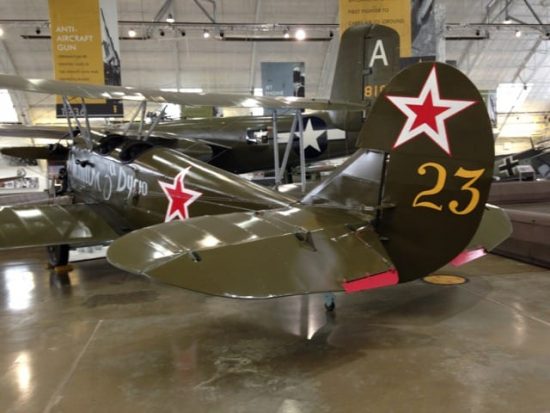My brother James visited Seattle this week. While he and I crossed on a ferry to San Juan Island for a little getaway, he saw the brochure for the Flying Heritage Collection at Boeing’s Paine Field. One picture of a P-51 Mustang and he was smitten, so we made time to visit the exhibit of World War II planes.
We had not been in the hangar long when a helpful guide came up and said to me, “We have something you would be interested in. Have you ever heard of the night witches?”
“Yes, I have,” I told him. Because I am working on stories about First Women a friend thought I might be interested in the night witches and had sent me information a couple of years ago.
“Well, out of the thousands of visitors we have here, you are maybe one of 26 who have. We have one of their planes.”
And now I was smitten as well.
During World War II, Russia trained young women, many of them teenagers, to fly. They were assigned wood-and-canvas biplanes in which they bombed Germany. The plane held only a few bombs; some of them were tossed out of the cockpit by the navigator in the second seat. They carried no parachutes because the planes were so small they needed the extra weight for bombs and they flew so low the parachute wouldn’t be effective anyway.
They often flew eight missions a night, sitting in the cold to refuel and reload then flying out into a sky so cold their feet froze to their boots.
They would approach their targets, then idle the engine and glide to the bombing target at an extremely low altitude. They flew 23,000 sorties for what became the most decorated unit in Russia.
Two anecdotes show their ferocity:
When the pilot of a plane was shot on one sortie, the navigator stood, leaned forward, pulled the pilot off the yoke and flew the plane back to base from the back seat.
Another pilot was fired upon and caught in the searchlights. She pretended she was shot and spiraled downward. The shooting stopped and eventually she was out of the searchlights. At that point she gunned the motor and flew away.
Because of their stealth tactics, the Germans feared their raids. As has happened throughout history, when men are confronted by women’s actions they cannot understand, the fliers were labeled “Night Witches.” The Russians called them “Heavenly Creatures.”
Flying Heritage Collection
The exhibit at Paine Field near Everett, Washington has American, Japanese, German, Russian and British planes from World War II as well as rockets and jeeps. The planes are operational and are flown periodically. Even if you don’t love planes, the trip is worth it for the history. Learn more at: http://flyingheritage.com.

